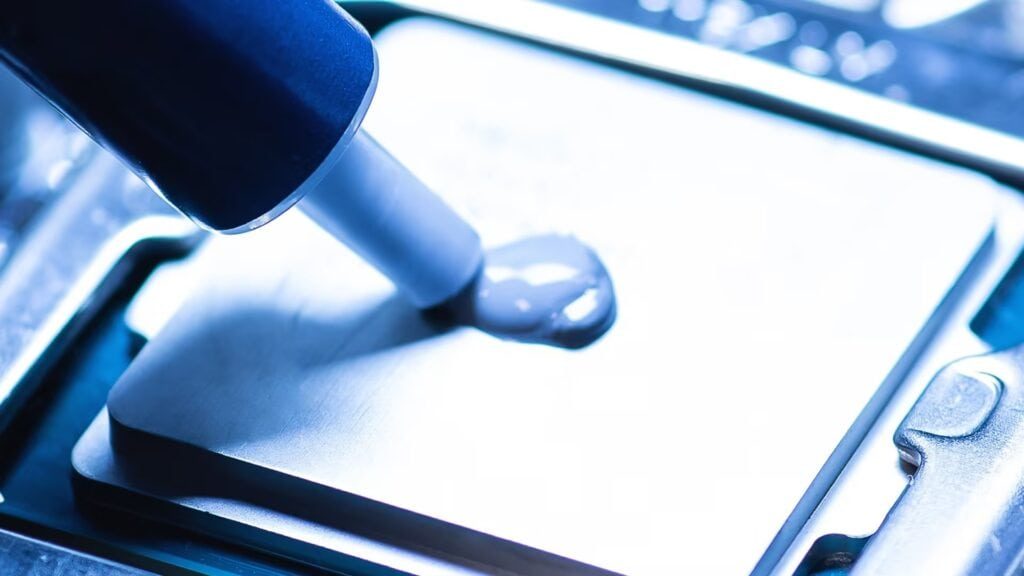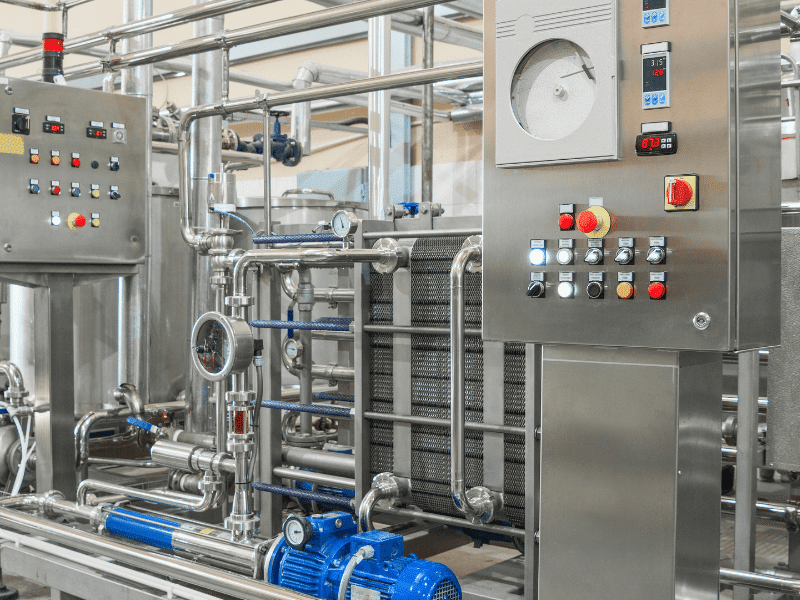Heat Sinks are no doubt a close companion to most electronic components. They manage the important task of throwing the heat away from the components. This results in better heat management and efficient performance. But how does a heat sink work in real time? Which important components does it contain that manage such a high temperature?
The answer to this question lies in several parts of heat sinks. Among those, the heat sink fins are at the top. Going deep into the science of heat sink operations, fins can never be ignored. They perform a remarkable job parallel to the heat sink. So, in today’s guide, we will focus on the purpose, types, design, and benefits of heat sink fins. Let’s discuss this in detail.
Understanding Heat Sink Fins
Fins are an extra part attached to the heat sink. It enhances the surface area for smooth heat movement. It is attached to the base of the heat sinks and extended towards the outer position. They are designed in such a way that improves airflow and movement of heat elements. Fins operate following the formula of conduction, convection, and radiation.
– Key Features of Fins:
- Fins provide better surface area.
- Fins provide decent thermal conductivity.
- Fins feature different shapes & designs.
- Fins are easy to install and remove.
- Fins are light in weight and reliable in nature.
– How do Fins Work?
- Conduction: It refers to a transfer of heat elements from components to a heat sink.
- Convection: It refers to the transfer of heat from the heat sink to the fins. Fins then move it outside the area. (Passive & Active Cooling System)
- Radiation: A limited action compared to conduction + convection, but heat is transferred here in electromagnetic form.
– Manufacturing Material of Fins:
The science behind the top performance of cooling components is the quality of the manufacturing material. The quality of the material impacts its performance, reliability, and durability. Fins are usually manufactured utilizing two main materials. These are,
- Aluminium: It is a commonly used manufacturing material for fins. Aluminum is light in weight, costs less, and offers decent thermal conductivity. It provides the thermal conductivity range of 205-230 W/m·K.
- Copper: As we know, copper has higher levels of thermal conductivity. It is preferred for specific high-end operations. Copper is more costly and heavier than aluminum. It provides the thermal conductivity range of 386-401 W/m·K.
Types of Fins
The following are the major types of fins. Each type has various other subtypes. Let’s explain each,
– Plate Fins:
Plate Fins include,
- Straight Fins: These fins are the most commonly used subtype of plate fins. They feature a straight structure with vertical or horizontal positions. Straight fins are enough to control the heat elements effectively.
- Louvered Fins: These fins are designed in a pattern containing small cuts. Such cuts improve the airflow and provide a way for better heat dissipation. Louvered Fins are mostly used in HVAC & Radiators.
- Wavy Fins: These fins are designed in a zig zag or wavy shape. This type of shaping structure improves the airflow and heat transfer. Wavy Fins are mostly used in electronics, automotive, and air/defense.
– Pin Fins:
Pin Fins include,
- Cylindrical Pin Fins: These are cylindrical-shaped fins attached from the base of a heat sink towards the upward direction. Cylindrical Pin Fins provide a large surface area, ensuring a better conduction of heat-generating elements.
- Conical Pin Fins: These fins feature a wide bottom and a narrow top. In other words, conical pin fins are cone-shaped fins designed to deliver solid thermal conductivity. The conical pin fins are mostly used in GPUs, CPUs, and Power Supplies.
- Elliptical Pin Fins: These are oval-shaped fins designed to improve the cooling capacity by resisting the airflow. The Elliptical Pin Fins are best suited for the active cooling system. They are mainly used in electronics, automotive, and industrial equipment.
Benefits of Fins
a) Better Heat Dissipation
As we know, the heat sink fins provide a large surface area. This surface area allows heat from the components to the heatsink, and from the sink to the fins.
b) Wide Compatibility
Heat sink fins offer a wide range of compatibility. It is used in most departments and sectors. Examples include electronics, automotive, industrial, medical, air, and defense systems.
c) Improved Performance
The temperature-controlled electronics will outperform all the performance parameters. The reason is managed heat as per the requirements of the cooling system.
d) Increased Lifespan
As a result of controlled temperatures, the components operate on a stable temperature. Such stability increases the lifespan of components and avoids any early failure.
e) Energy Efficiency
Heat sink fins assist in avoiding putting extra load on components. They perform within the recommended limit of operating load. This helps to save energy from different sources.
f) Cost Effectiveness
Fins are affordable, especially aluminum-made fins, which are a cost-effective option. After attaching it with heat sinks, the final result becomes an economical option for most.
Factors Affecting Fins Performance
The following factors can impact the performance of heat sink fins. (Positively or Negatively)
– Fin Material:
As we discussed earlier, choosing a quality manufacturing material positively impacts performance. The same is the case here; the copper fins are considered more efficient because of the quality of the material. Aluminium ones are also a decent choice for many.
– Fin Spacing:
The more space between the fins indicates a better airflow plus heat transfer. Not only that, but it also provides adequate spacing for cleaning dust. Similarly, the narrow spacing between the fins may cause a lack of proper airflow and can slow down the heat dissipation process.
– Fin Height:
In simple words, fins with more height feature more surface area. The more surface area means improved heat transfer and smooth airflow. The fins with less height offer less surface area. So, as per the case size, an optimal fin height positively impacts the performance.
– Fin Thickness:
Here, the thicker fins feature better conductivity but have limited fins. It impacts the surface area to maintain smooth airflow. Similarly, the thinner fins feature a large surface area, better heat transfer, and stable performance with fans/liquid cooler.
Applications of Heat Sink Fins
The following are the major applications of heat sink fins.
- Electronics: CPUs and GPUs, Power Invertors/Supplies, LED Lights, and Amplifiers.
- Automotive: EV Batteries, Combustion Engines, and Inverters.
- Industrial: 3d Printers, Laser Machines, and CNC Machines.
- Medical: MRI Machines, CT Scan Machines, Ventilators, and Surgical.
- Air/Defense: Radar System, Satellite System, and Military Equipment.
- Telecom/Data Centers: Base Stations, Server Machines, and Fiber Optics.
JiuJu’s Heat Sinks
Searching for a quality Heat Sink that lasts longer in front of excess heat? The one that features quality fins with optical height and thickness. We at JiuJu have expertise in manufacturing the finest quality heat sinks and fins.
Apart from that, we also have expertise in manufacturing quality thermal interface materials. One of our renowned products is Thermal Pads.
The production ratio at JiuJu easily crosses the figure of multiple tons a month. Want any further information about JiuJu and its products? Contact us here; our professionals at customer support will provide guidance accordingly.
Final Remarks
Heat Sink Fins undoubtedly have a critical role in managing the rising temperatures of electronics components. The surface area, smooth airflow, and ability to pass on the heat have made them a solid choice for most users. Each fin design offers a unique feature, one needs to select the type as per their cooling requirements.
Similarly, the quality fins strongly contribute to improving the performance and lifespan of components. They also eliminate the maintenance cost as they require limited maintenance. For most electronic devices, aluminum-made fins are more than enough to perform. For higher level usage, one can prefer copper-made fins.Knock at the doors of JiuJu for quality Heat Sinks and Thermal Interface Materials.





